Once on the brink of extinction with only 21 individuals left in the wild, Whooping Cranes are on the road to recovery. Approximately 836 Whooping Cranes live today, and 76 are in the introduced Eastern Migratory Population. The cranes in this population breed in Wisconsin before traveling to their primary wintering areas in western Indiana and northern Alabama. This migration typically begins in October, and the cranes remain in their wintering areas until March. While in their wintering areas, Whooping Cranes use publicly owned property to roost and agricultural fields to forage.
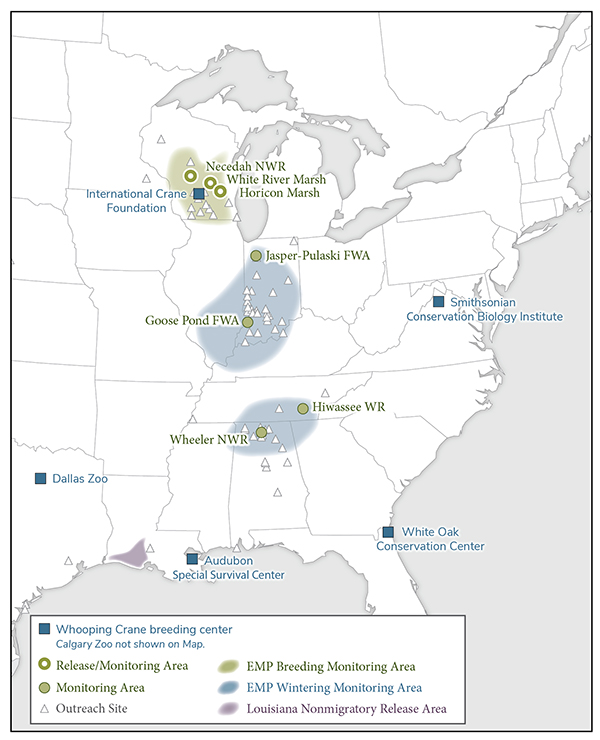
In the northwestern corner of Indiana, Jasper-Pulaski Fish and Wildlife Area provides cranes with various wetlands and farmlands. In addition to Whooping Cranes, this property regularly hosts 20,000 to 30,000 Sandhill Cranes during peak fall migration. Whooping Cranes forage on food plots and nearby agricultural fields throughout the day, fueling up on waste grains, insects, rodents or snakes. Jasper-Pulaski Fish and Wildlife Area offers a spectacular viewing tower overlooking the food plots where the cranes forage before flying off to marshes and nearby powerplant pools, kept warm from cooling powerplant equipment, for nightly roosting.
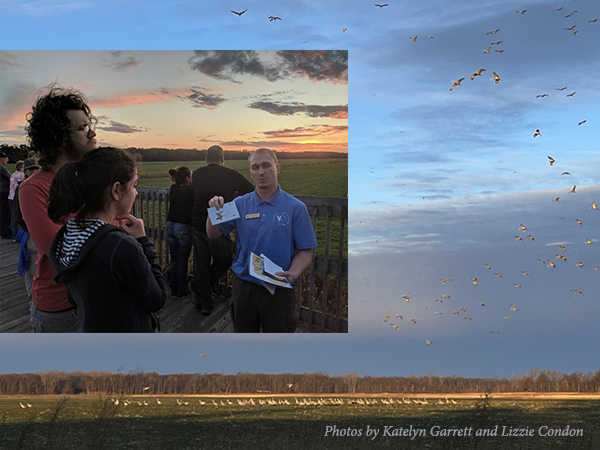
Another popular location for Whooping Cranes is Goose Pond Fish and Wildlife Area in southwestern Indiana. This property is an expansive 10,000 acres of wetland and prairie that is the perfect wintering habitat for Whooping Cranes. If there is open water and abundant resources in Indiana, Whooping Cranes may choose not to fly further south. Typically, 30 to 40 Whooping Cranes will winter in Indiana each year. However, a number of cranes will continue their migration south to winter in Alabama.
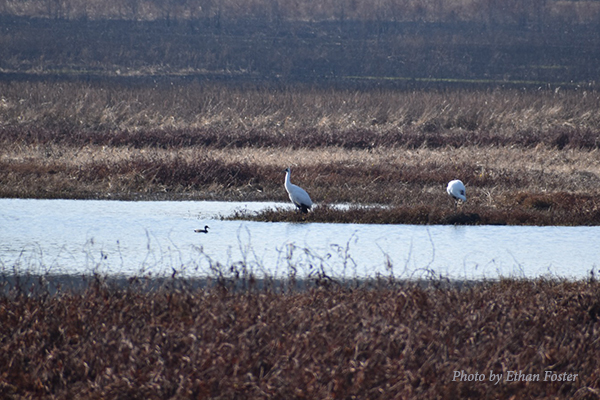
Wheeler National Wildlife Refuge in Decatur, Alabama, is another hotspot for wintering cranes and will host around 18 Whooping Cranes and 20,000 Sandhill Cranes each year. On this 35,000-acre refuge, current land and water level management practices have Whooping Cranes coming back year after year!
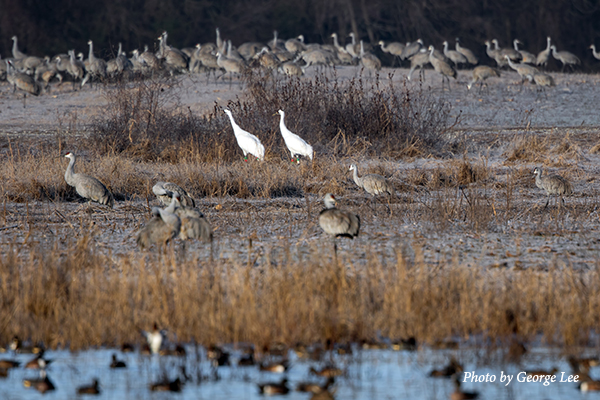
The Tennessee Valley Authority lowers water levels of the Tennessee River throughout the winter to prevent potential flooding during Alabama’s rainy season. The five-foot decrease in water level aids flood control and exposes valuable roosting and foraging habitats for cranes. This managed habitat reveals valuable food for cranes, such as frogs, insects, crawfish and more.
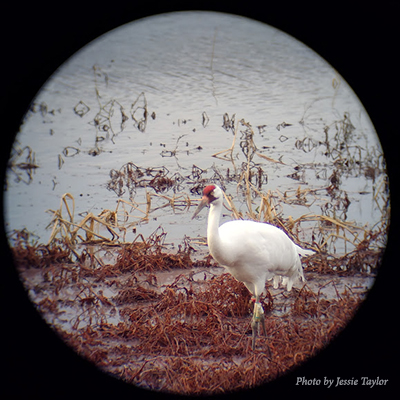
In addition to water control, cooperative farming agreements on the refuge allow local farmers to grow crops on refuge land with the understanding they leave 20 percent of their yield for the benefit of wildlife. Some of these crops, including corn and millet, provide a consistent food source for Whooping Cranes in the agricultural fields surrounding the refuge’s visitor center and newly renovated observation building.
We encourage you to celebrate Whooping Cranes with the International Crane Foundation in Indiana and Alabama this winter! From January 13-15, 2023, Wheeler National Wildlife Refuge will participate in the three-day Festival of the Cranes in downtown Decatur, Alabama, and on February 25, 2023, Friends of Goose Pond Fish and Wildlife Area will host their annual Marsh Madness Festival in Linton, Indiana. Both festivals feature opportunities to view Whooping Cranes, hear from keynote speakers and meet the International Crane Foundation’s Whooping Crane mascot, Hope.
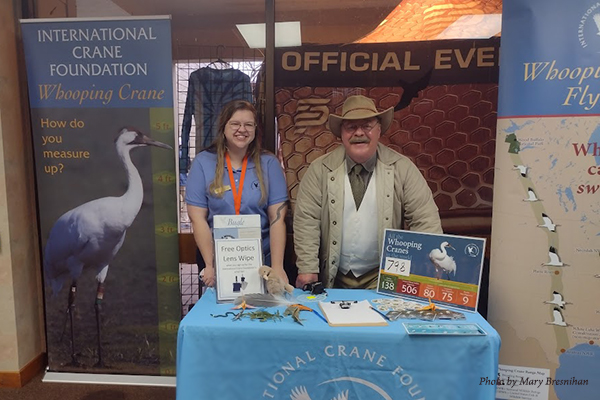
We hope to see you at these festivals, and we ask that you please remember these crane-safe behaviors when observing Whooping Cranes:
- Respect private property and only park in designated parking areas to view Whooping Cranes.
- Give cranes their space – remember to stay on the trails and stay at least 200 yards away from cranes at all times.
- Report your Whooping Crane sightings to bandedcranes.org.
- To keep Whooping Cranes safe from harassment, please only share the county Whooping Cranes were spotted in with your friends, family and on social media.
- Report all Whooping Crane poaching, disturbance or harassment to local authorities.
Story submitted by Katelyn Garrett, Whooping Crane Outreach Program Assistant – Indiana and Jessie Taylor, Whooping Crane Outreach Program Assistant – Alabama. Learn more about Whooping Cranes here.
